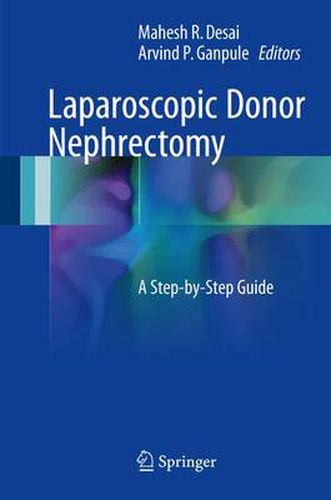Readings Newsletter
Become a Readings Member to make your shopping experience even easier.
Sign in or sign up for free!
You’re not far away from qualifying for FREE standard shipping within Australia
You’ve qualified for FREE standard shipping within Australia
The cart is loading…






This book explains the development of various laparoscopic donor nephrectomy (LDN) techniques, which can be performed via the retroperitoneal or the transperitoneal approach. It provides a step-by-step explanation of LDN, including details of intricacies such as port positioning, dissection steps, securing the hilum and retrieval. It also reviews new techniques like robotic donor nephrectomy and single-port donor nephrectomy. Lastly, it explores the non-technical but equally important issues of donor work-up and legal and social aspects.
LDN is a unique surgical procedure in which the surgeon operates on an individual who is not a patient but someone donating out of altruistic motives, and it has to be zero error for the safety of the graft, donor and the recipient. This handbook is a valuable resource for urologists, general and transplant surgeons as well as anesthesiologists and medical social workers working in the field.
$9.00 standard shipping within Australia
FREE standard shipping within Australia for orders over $100.00
Express & International shipping calculated at checkout
This book explains the development of various laparoscopic donor nephrectomy (LDN) techniques, which can be performed via the retroperitoneal or the transperitoneal approach. It provides a step-by-step explanation of LDN, including details of intricacies such as port positioning, dissection steps, securing the hilum and retrieval. It also reviews new techniques like robotic donor nephrectomy and single-port donor nephrectomy. Lastly, it explores the non-technical but equally important issues of donor work-up and legal and social aspects.
LDN is a unique surgical procedure in which the surgeon operates on an individual who is not a patient but someone donating out of altruistic motives, and it has to be zero error for the safety of the graft, donor and the recipient. This handbook is a valuable resource for urologists, general and transplant surgeons as well as anesthesiologists and medical social workers working in the field.